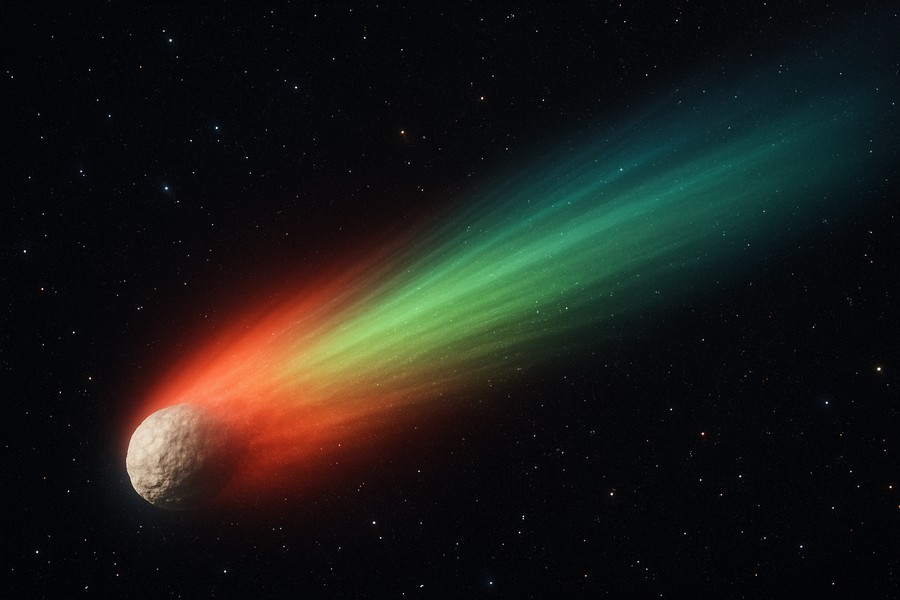
The Mysterious Transformation of a Comet's Color from Red to Green
Imagine a massive object from another star system cruising through our own Solar System. Now, imagine it transforming its color from red to green. This isn't a scene from a sci-fi movie, but a real-life cosmic event involving a large interstellar object named 3I/ATLAS. Let's make it clear, though, this is not a sign of extraterrestrial visitors, according to experts.
What is 3I/ATLAS?
3I/ATLAS isn't just any comet. It's unique because it's the third object that we've seen coming from outside our Solar System, after ʻOumuamua and Comet 2I/Borisov. Like other comets, it has a solid icy nucleus at its center, and it's surrounded by a cloud, or coma, of gas and ice. But this one has a little extra mystery to it.
The Color Shift
When astronomers first spotted 3I/ATLAS in July, it had a distinct red coma. However, over the next few weeks, something peculiar happened. During a total lunar eclipse known as the "blood Moon" in Namibia, two amateur astrophotographers captured images of 3I/ATLAS. To their astonishment, the interstellar visitor appeared green with a slight blue tint.
The pair noticed in their images that for the first time, a gas-rich coma of 2 arcminutes was visible in both blue and green filters. But why did the object change its color?
The Green Glow of Comets
A green glow isn't entirely uncommon for comets. Usually, the green color is connected to the presence of diatomic carbon (C2) molecules in the coma. When these molecules absorb ultraviolet sunlight, they emit green light. However, this doesn't fully explain the emerald hue of 3I/ATLAS.
Observations have shown that 3I/ATLAS is one of the most carbon-chain depleted comets known, suggesting it's not rich in C2. This clue hints that the green color might be the result of some other unidentified chemical processes within the coma.
A Theory About the Color Change
A renowned professor has shared an interesting theory about the comet's color transformation. He suggests that the shift from red to green could be associated with a significant increase in the production of cyanide within the coma, as observed by a large telescope in late August.
3I/ATLAS: The Fascinating Features
But there's more to 3I/ATLAS than its color. According to recent research, this object is incredibly massive, weighing over 33 billion tons, or 33 trillion kilograms. To put that into perspective, that's the weight of about 165,000 cruise ships! Its nucleus also has a diameter of 5 kilometers (3.1 miles), making it exceptionally large for a comet.
As scientists continue to study 3I/ATLAS, we can expect more fascinating insights about this interstellar visitor and the wonders of our universe.
